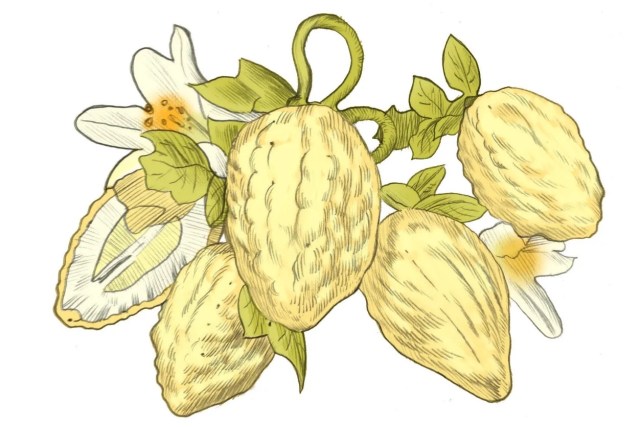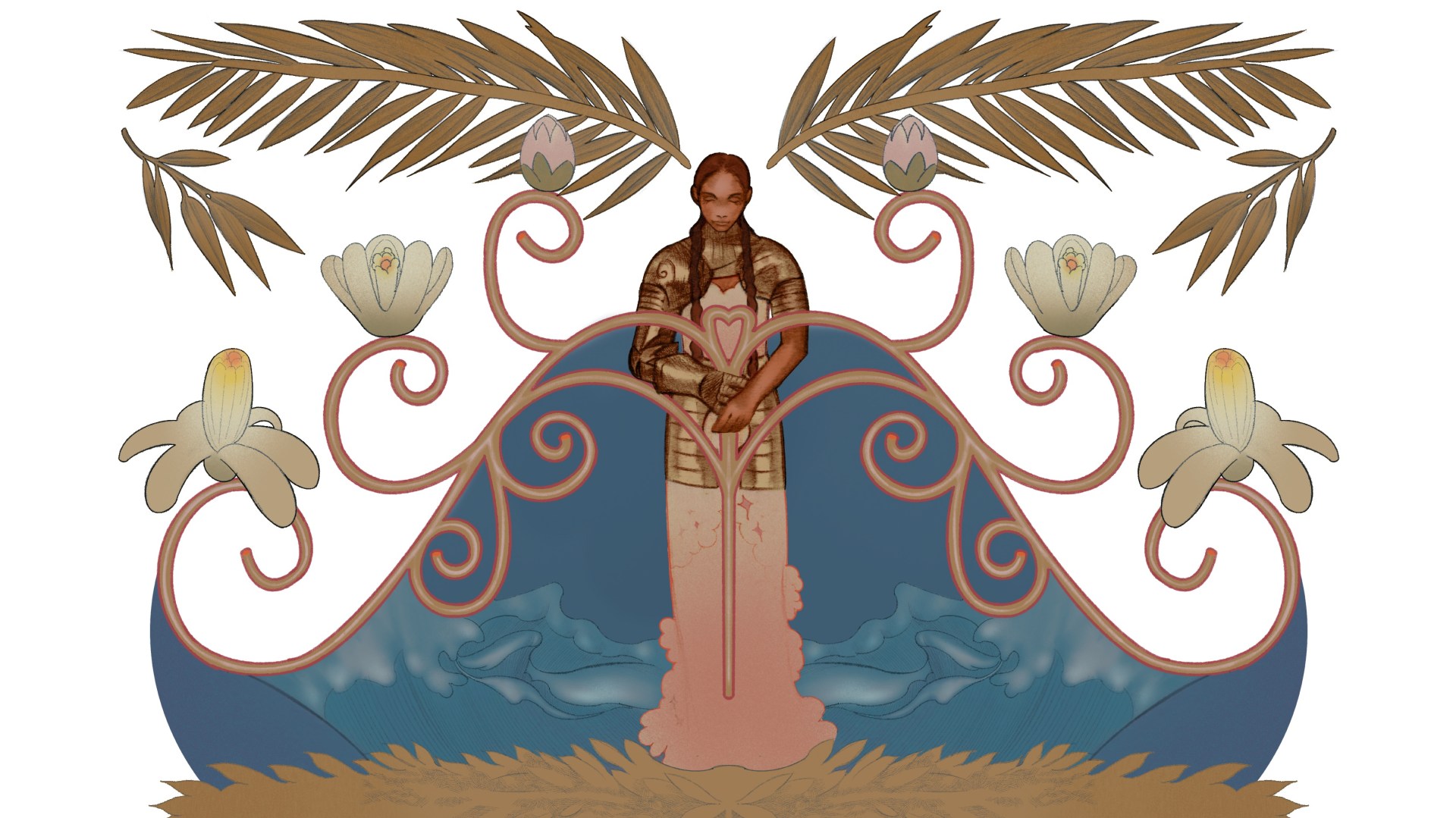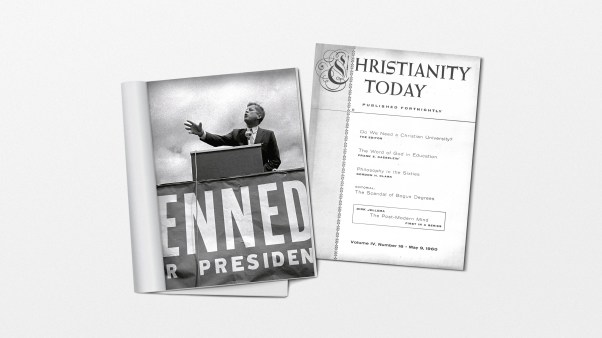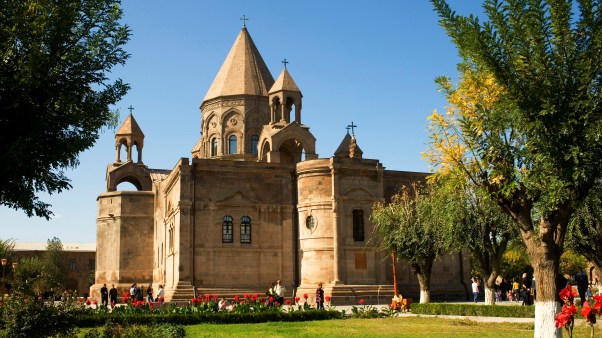Caught between a tavern and a cathedral, between the slums and stews of Southwark and the beating heart of medieval religion in the 14th century, a passel of pilgrims journeys onward to the grave of a martyr.
To pass time on the road, they have been spinning stories: good stories, bad stories, stories that poke holes in the pretensions of other pilgrims or that bore even the kindest listener, stories that are basically an obscene middle finger to the universe. Now, buoyed by these tales, they are almost to Canterbury to visit the shrine of St. Thomas à Becket.
The end of the journey has come, and pilgrim shadows loom long on the road. It is now the Parson’s turn to tell a story. You may be a priest, pleads the host who has orchestrated this game of tale-telling, but don’t ruin the fun. The Parson smiles. He cannot rhyme, but he will tell “a merry tale in prose / To knit up all this feast and make an end.”
Thus winds down the great poem of Geoffrey Chaucer, The Canterbury Tales. But the Parson’s merry little tale is neither merry nor little nor a tale. It is a rather lengthy moral treatise of 1,080 lines on the subject of penance.
Medieval communities across Europe used this genre to examine the conscience and prepare for the threefold sacrament of penance: contrition, oral confession of sins, and satisfaction. These writings surface everywhere in the Middle Ages, a dull white noise behind the bright songs of poetry that appear in The Canterbury Tales, Piers Plowman, and Sir Gawain and the Green Knight.
Unsurprisingly, “The Parson’s Tale” rarely ends up in collected translations of The Canterbury Tales. Outside the most dedicated Chaucer scholars, most readers find it sleepy at best, judgmental at worst. Where is the witty, poignant, storytelling Chaucer we know and love?
In fact, scholars disagree on how to read it. How is this implausible moral treatise supposed to tie up the wild yarns spun out before it? Is it a piece of absurdity, and did Chaucer mean it as a joke, a sly injection of dusty-dry religious hypocrisy punching down the creative, messy, and human? After all, Chaucer is famous for his trickery.
Such interpretations pit creative stories against the dull, penitential tale of the Parson. This conflict aligns with how we often view ourselves and art in postmodernity: as discrete, divided, and individual. We think that’s what makes them our stories, our art. Instead, insists the Parson among the crowd of storytellers, his tale “knits up this feast.” It makes an end. It coheres. It reorients each pilgrim’s tale in a new light.

Etrogs. Mixed Media (Pencil and Procreate), Diego Best, Sep. 2025.
The point of all penitential literature—that mumbling, monotonous genre of “The Parson’s Tale”—is self-knowledge in service of reconciliation within Christ’s body. Embracing divine grace is indeed the end and the beginning of all our stories told on the road. We begin to ask, What can communal self-knowledge offer us today, in the ways we understand ourselves and our creative work in this world?
Perhaps the very phrase “communal self-knowledge” strikes us as an oxymoron. Today, self-knowledge usually means something more like seeking the sparkles of uniqueness about oneself (mainly good things). How are you different from others? Or sometimes it means implicitly asking, How are you different in a cool, interesting, maybe even misunderstood way? This postmodern self ends up celebrated but anxiously protected like a fragile balloon at a toddler’s birthday party.
In the West, we often frame self-knowledge as heroically won despite the world, despite community, despite familial ties and national histories. In that defiant context, the admission of weakness, failure, wrongdoing, or even the need for others can compromise the integrity of that hard-won individual self.
In stark contrast, medieval self-knowledge was always communally contingent. The Parson begins by paraphrasing Jeremiah 6:16 and the kind of knowledge that we seek as we pursue life together: “Standeth upon the ways, and seeth and asketh of old paths (that is to say, of old sentences) which is the good way, / and walketh in that way, and ye shall find refreshing for your souls.”
For medieval people, it was these “old sentences” that could help people understand themselves more fully. For in confessional self-knowledge, the question transforms. It’s not how you are special or different. Instead, how have you fallen and failed in the ways that other people just like you have? And how will you be caught up in the workings of God’s grace, just like those fallen friends around you?
The old paths of “The Parson’s Tale” reach further back in time than Chaucer’s 14th century, all the way back to the Fourth Lateran Council of 1215—a council of theologians who inadvertently ignited a profound emphasis on spiritual interiority. This papal council confirmed that all Christians must participate in yearly confession, in the sacrament of penance, before they received the Eucharist during Eastertide.
To receive Christ’s body was serious business. Medieval thinkers cautioned that one mustn’t receive casually, with a compromised conscience or while living in conflict with one’s neighbors. Though all baptized Christians were saved by grace, penance was meant to clean the house of the heart and effect reconciliation within communities. Ideally, when taking the Eucharist, no one would be in a position of isolation from God or humankind.

Pomegranates. Mixed Media (Pencil and Procreate), by Diego Best, Sep. 2025.
To confess fully, one needed to take the first step of penance known as contrition—to know what was sin and what wasn’t, to strip away the little rationalizations and self-deceptions. So, back in the 14th century, our Parson made a list of vices. What do you lack? Where do you hurt? How have you hurt others? He describes how vices might be combatted with patterns of living called virtues.
Then, as the Parson describes, one confessed all these things fully to a priest before moving to the final stage, satisfaction: the acts and apologies to be done in the aftermath. Satisfaction was the reclaiming of your place within community, the “receipts” or proof that you were determined to begin to undo what you had done. Pilgrimage itself was a work of satisfaction. Satisfaction asks, What is your role within your community, within your contexts and histories? What are you called to in love?
What paths might you follow that have already been trod? So asks the penitential literature of “The Parson’s Tale.” Confessional self-knowledge becomes a creative and communal endeavor, bravely laying bare our failings to one another. This self-knowledge can be shared, modeled, or taught. The ways other people have erred, loved, or worshiped become paths to guide us into greater understanding of ourselves and God.
Confession has always and only belonged to the individual person. Yet the self is completely unknowable apart from others and apart from its vocation of love within the community. Then, humans lost themselves. Now, we mistakenly draw this precious self ever closer in response, buttressing it against the world. Against this reality, the old penitential paths of the Parson come as a comfort, as a relief to us.
There is an inviolate sturdiness in the self and story belonging to the kingdom of heaven, one that does not drift like the frail self defined only on its own terms. Ordinary, communal, penitential self-knowledge that manifests in repentance and flowers into active love of self and community is indeed “a merry tale in prose.”

Figs. Mixed Media (Pencil and Procreate), by Diego Best, Sep. 2025.
In The Canterbury Tales, pilgrims have threatened to mutilate one another, have nearly rioted in response to hearing lies, or have cut one another off in desperation to reach the end of a boring story. There have been stories told to reinforce social hierarchies or to deepen violence between men and women or religious groups.
Chaucer poetically sets “The Parson’s Tale” as the last curious story on the old path to Canterbury to somehow miraculously knit up the feast. All the pilgrim tales are ultimately meant to be interpreted in the context of their commonality, in the shared pilgrims’ ancient path toward Christ.
The knitting does something to Chaucer’s art—just as penance does something in both individual persons and communities. The tales themselves, from the mundane to the stupid to the beautiful, have become welling sources of communal self-knowledge. The merry tale in prose works backward.
Knit up the feast. When we begin to understand ourselves within communities, held in grace cemented by mutual failure and need, all our tales can become merry tales of repentance, however prosaic.
How does your creative work—whether in writing, art, or relationships—belong to others as much as it belongs to yourself?
It is still yours, just like confession is always yours. Yet when we understand our creative labors as distinctive solely because they are individual or different from other people, we lose something essential. Work becomes ephemeral, fleeting, flimsy. Stories lose their cosmic meaning set apart from their teller and the teller’s community.
But within the pilgrimage, within the penitential work of communal self-knowledge and healing, stories lose their ephemerality and become enduring gifts given to others. They then tenderly hold up the mirror, like the Parson, to our likeness to and distance from God.
Grace Hamman is the author of Ask of Old Paths: Medieval Virtues & Vices for a Whole & Holy Life and Jesus Through Medieval Eyes: Beholding Christ with the Artists, Mystics, and Theologians of the Middle Ages. Learn more about her work at gracehamman.com.















